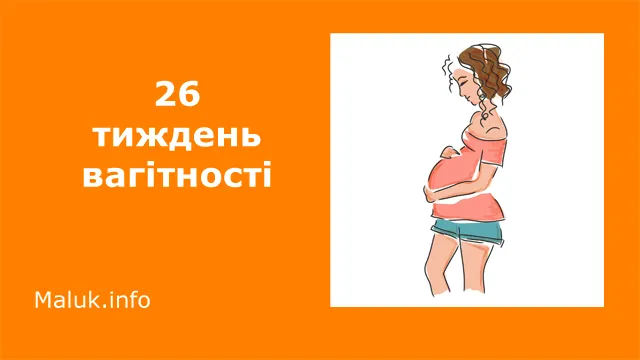Pregnancy calendar: 26th week of pregnancy
Pregnancy calendar by week. An experienced doctor tells how a child develops in the womb and what changes occur in the pregnant woman’s body. All the most important things about the 26th week of pregnancy
Changes in your body (26th week of pregnancy):
Changing your posture, additional load on the spine, compression of blood vessels supplying the spine – all this contributes to the appearance of back pain. Of course, there are drugs that can be used during pregnancy, especially those that act locally. However, the main idea during pregnancy is to minimize the use of any medicinal substances. That is exactly why it is worth learning to help yourself without drugs.
So , exercises that will help you reduce back pain, prevent its occurrence, as well as Kegel exercises:
- It is necessary to shorten the pelvic muscles that support the vagina. Contract, tighten the muscles for one or two seconds, and then – relax, let go. To have a noticeable effect, repeat this exercise several times a day for 5-30 times. This exercise is simply necessary to strengthen the pelvic muscles, and therefore to prepare for childbirth and prevent ruptures.
- Exercises with a gymnastic ball. Sitting comfortably on the gymnastic ball, try to describe a circle, move to the right, left, back, forward. Sitting on the floor, lean on the ball, try to massage your back with the ball.
- Exercises against the wall. Stand facing the wall, align yourself, try to relax your back as much as possible. take a deep breath
- try, by slightly bending your back, to touch the maximum surface of the wall with it. Gently exhaling, straighten your posture. Repeat in a slow rhythm 10-15 times. This exercise should be repeated several times a day, when there are a few minutes to spare.
It is also worth remembering about: a belt for pregnant women, about sleeping in a comfortable position, which can be achieved due to pillows, as well as about swimming.
Starting at week twenty, your uterus also begins “training” for labor. Such preparatory “exercises” are Braxton-Hicks exercises. These spurious receptions are irregular. Pulling sensations of tension appear in the lower abdomen or in the lower back, sometimes you can feel tension in the abdomen by placing your hand on the abdomen. However, the contractions last up to a minute or two, can be repeated in 4-5 hours, and are painless. For the first time, pregnant women can be afraid of such pseudo-pregnancies. Therefore, you should remember about such a phenomenon, of course, in case of severe pain, prolonged tension, you should seek help from a doctor.
How does the baby grow?
The child is actively moving, even before the 28th week of pregnancy, it has enough space for exercises. Moves hands, feet. Hands are already fully formed, have fingerprints. Thumb-sucking, a favorite exercise, is actually a good way to practice the coordination of sucking and chewing movements.
In the lungs, all the blood vessels and capillary networks that will later be needed for breathing and gas exchange have developed. Accordingly, the cardiovascular system, in particular, the heart begins to work at full strength. The child performs breathing movements: inhales and exhales a small amount of amniotic fluid. These so-called breathing movements are important for the first breath a baby will take after birth. The child learns to breathe while still inside the womb.
The study of the rhythms of brain activity indicates that children at this stage begin to develop their own biological daily rhythm. It is interesting that twins can have completely different phases of activity or sleep. The baby’s brain perceives a huge amount of information, namely: the mother’s voice, the sound of the heartbeat and the activity of the internal organs of the mother, as well as loud sounds and vibration from the outside, skin sensitivity, the feeling of touching one’s own face and body, and also perceives a change in lighting and can distinguish amniotic fluid taste, smell.
Hearing is the first sense that appears in a baby. The ear begins to form from the 9th week of pregnancy, still in the form of small dents on the side of the head. At first, the child, most likely, perceives sound vibrations or vibrations with the whole body. Over time, with the development of the ear, the sensitivity to sounds improves. Now you can safely address your baby, mostly the baby in this term not only passively hears you, but also tries to respond with movements, as if saying: “Mom, dad, I’m here.”
Author: Olga Letnyanchyk, doctor
Read also:
– Pregnancy calendar: from 1 to 40 weeks

